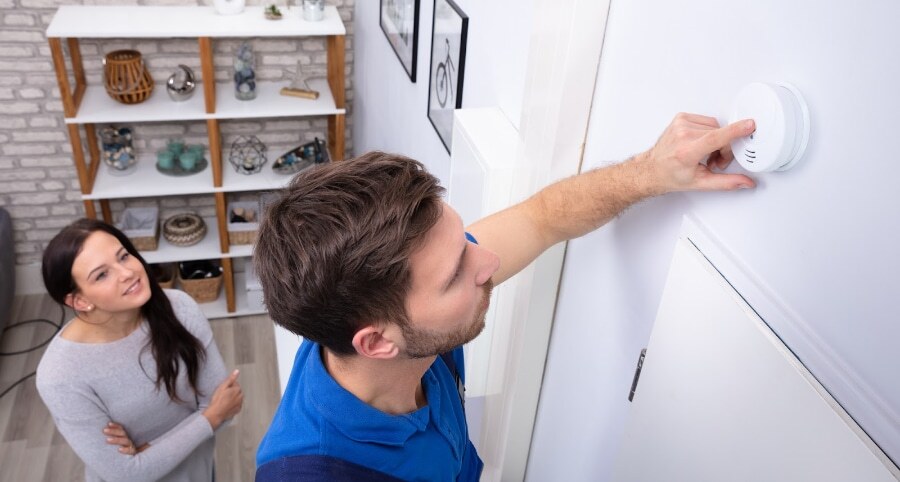Where to install carbon monoxide detectors in your St. Paul home

Carbon monoxide is different from usual dangers residents face as you can’t see or smell it. Despite the fact it’s not identifiable by human senses like fire, smoke, and flooding, you may still effectively and easly safeguard yourself with CO detectors. Find where to install carbon monoxide detectors in your St. Paul residence and learn about the perks of including them in your whole-home security plan.
Where is CO found?
Owing to its lack of color and odor, carbon monoxide is often referred to as the silent killer. It materializes due to an incomplete combustion of fuels in common appliances like furnaces, generators, gas stoves, and fireplaces. Most families won’t encounter problems with their fuel-consuming appliances if they maintain them properly. But if you forgo regular servicing or don’t have necessary ventilation, a collection of this potentially lethal gas may occur.
Early indicators of carbon monoxide poisoning include nausea, vomiting, headaches, and dizziness. These frequently occur at low levels of CO. Exposure to higher levels for a longer period can cause serious complications and even death.
Recommendations on where to install St. Paul carbon monoxide detectors
Each home should have at least one CO detector. Actually, you ought to install them on each floor, and that includes basements where fuel-burning appliances are frequently situated. Use these suggestions on where to install St. Paul carbon monoxide detectors:
-
Place one within 10 feet of sleeping areas. This location is most important, so affix it here if you only opt for a single CO detector.
-
It’s wise to have a carbon monoxide detector on each story of your residence, especially on ones with fuel-burning appliances.
-
To avoid false alarms, keep them no less than 10 feet from sources of carbon monoxide, like gas stoves. A touch of CO could be released when fuel-burning appliances start up.
- Avoid spots next to doors and windows, as outside air will reduce the unit’s effectiveness.
-
Place carbon monoxide detectors in spaces above attached garages.
Like you would with smoke detectors, inspect your CO units on a regular basis, clean them occasionally, and avoid mistakenly leaving something beside them. Generally speaking, replace your detectors every five years.
Improve safety by including CO detectors in your home’s security system
Present-day home security systems offer more layers of protection than you’ve ever had before. In fact, you can add CO detectors and other safety alarms straight into your system. You and your monitoring agents will be contacted if your device is triggered. This professional support is valuable when you aren’t awakened by the alarm or if you’re not home.
Improve safety by including CO detectors in your home’s security system
Present-day home security systems offer more layers of protection than you’ve ever had before. In fact, you can add CO detectors and other safety alarms straight into your system. You and your monitoring agents will be contacted if your device is triggered. This professional support is valuable when you aren’t awakened by the alarm or if you’re not home.
Request carbon monoxide detectors with your Vivint smart home in St. Paul
